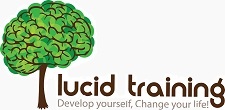THE OTHERS MATRIX
Becoming Real in Relation to Others
You are not only a human being, one with identity and value, nor are you only a doer, a person who takes action and develops skills, you are also a social being. The sub-matrix of Self addresses your sense of value and worth (Self, self-esteem). The sub-matrix of Power addresses your competencies, talents, skills, abilities to develop skills (Power, self-confidence). This next sub-matrix of Others addresses your social self—your relationships to others, your social skills, your social understandings and beliefs, your social panorama and much more.
As many people confuse self-esteem and self-confidence, so many also confuse their social worth with their personal worth. They confuse their social and emotional intelligence, the condition of their relationships with their self-esteem. This is especially true for people who grow up in group-oriented cultures (collectivism in contrast to individualist cultures). Because of this, they will tend to define themselves in terms of their group so that their personal value will depend on their social value. Yet these are two very different concepts.
That you and I are social beings, and that we are inevitably and inescapable social in our nature, leads to many consequences. One is that most of our emotions are social emotions. Think about all of the emotions that are relational emotions—love, hate, care, compassion, indifference, dislike, trust, distrust, kindness, meanness, frustration, affection, and the list goes on and on. Another consequence is that nearly all of our activities as human beings are social activities—connection, betrayal, friendship, affiliation, competition, collaboration, involvement, being included, being excluded, trusting, distrusting, open, closed, etc. Isn’t that amazing?
As social beings we also organize ourselves in our cultures so that there are another whole set of interactions that govern our lives— communication, persuasion, influence, management, leadership, politics, power relations, patronizing, democracy, equality, bureaucracy, socialism, etc. It is here that your social worth— your value in a given culture, context, environment whether your ethnic culture, religious culture, business culture, educational culture, etc.— can be so easily confused with your worth as a person. Do you confuse the two? Are you ready to distinguish them?
Your social worth grows out of the Power matrix— what you can and/or cannot do that contributes or does not contribute to the group determines the relative value you have in that social context. Additionally, it rises and falls with circumstances and phases in your life span.
The Others matrix focuses on you as a social being. Here your emotional and social intelligence is one of the central keys for being effective and successful in relationships. Here social knowledge is critical for the good life—knowing how to connect to people, how to be the kind of person that others enjoy being around, how to be compassionate and caring, how to be firm and independent, how to extend yourself for the well-being of others, how to create healthy boundaries, how to live a moral life in relationship to others, how to cooperate and even collaborate with others, etc.
NLP inevitably addresses a lot in this area since it is itself a Communication Model— and one of the first discoveries was the structure of rapport. The discovery was made from Virginia Satir and expressed in the statement that “people like people who are like them.” So making ourselves like them, that is matching their words, values, beliefs, ways of operating, etc. generates the sense of being in rapport (connection, bonding) with others.
Lucas Dirks extended this through creating and articulating the Social Panorama Model. Based on the fact that we internally represent things using sensory-based information (what we see, hear, feel, etc.), he noted that we often externalize our internal mental maps about people in the way we gesture and the language we use. We imagine someone we feel close to by internally seeing them as close to us. We talk about others as far away at some distance and that corresponds to the way we represent them inside our mind— they are at a distance.
Then there is your self-image, which is primarily your social image. You create your self-image mostly from how you see yourself reflected in the eyes of those around you. Your social sense of self then creates, at least in part, your self-image.
The relationship between you as a human being (Self) and you as a social being in relationship with others (Others) plays a role in so many aspects of our lives. Self and Others governs where you put your attention when you are in a group (the attention meta-program), it influences where you locate the concept of authority (the authority meta-program), and it also influences both your sense of morality (how you treat other people) and your sense of responsibility (where you draw the responsibility for and responsibility to line).
As a human being, the social dimension of your life critically influences so many aspects of the life that you live. It is through others that we become human as we are socialized to be able to live in community with others. It is through others that we engage in business which is essentially working with and through others. It is through others and with others that we experience the richest aspects of life. It is in relation to others that we want to make a difference and leave a legacy. It is in relation to others that we communicate and relate. It is in relation to others that you strive to be a real person, authentic.

